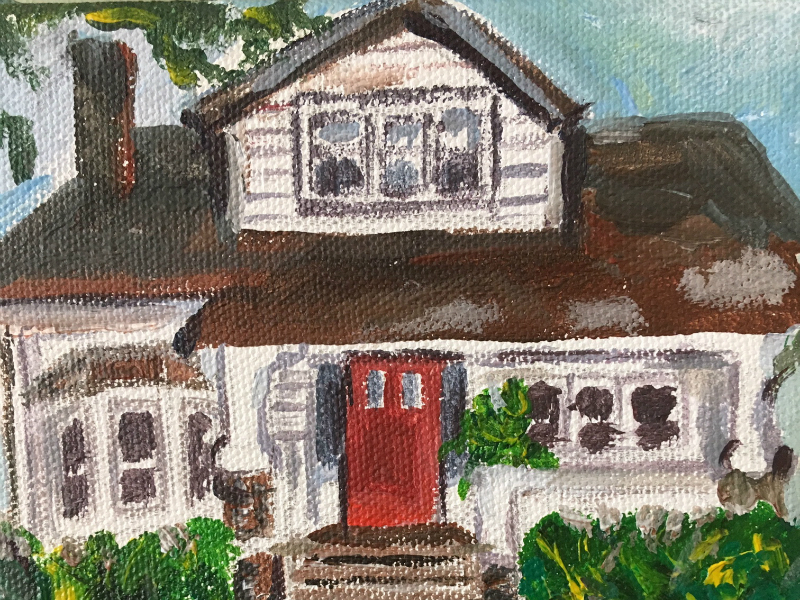In the summer of 1970, my parents did the unthinkable.
For all of my father’s 42 years and for the full 18 years of their marriage, my parents had lived in Sarnia, Ont., a small petroleum city on the Ontario-Michigan border where my father’s parents had emigrated from Galicia in the 1920s. In Sarnia, my family lived a comfortable, pleasant, slow-paced life, with friendly gentile neighbours and a small but reasonably active Jewish community.
My father’s parents had established a successful retail furniture business downtown, and my father started to work there after high school. My mother had been raised in an observant Jewish household, but in order to survive in retail, my father needed to keep the store open on Shabbat. While he minded the store, my mom and the rest of us observed Shabbat according to her family’s practice. With the exception of the rabbi, who changed every few years or less and often wasn’t even a rabbi, we were the only observant Jewish family in town.
As my siblings grew older, my parents began to despair of their ability to impart a sense of Jewish commitment to their kids in the absence of a broader Jewish community. They grew frustrated with the limitations of small-town life when it came to Jewish education. When my grandmother and then my grandfather died, my father struggled to gather together a daily minyan to say Kaddish. On Simchat Torah the year my grandfather died, my father took my older brother to synagogue for services, only to find that they were the only two people who had shown up. Right there and then, he decided enough was enough.
They sold the house, liquidated the store, rented out the building, and moved the family three hours away to Toronto. They had no real plan as to where to live or work. All they knew was that they wanted to live in a good Jewish community within walking distance of a synagogue and to send at least some of us kids to Jewish schools.
For my two older sisters, Jewish schooling proved impossible. They had already missed too many foundational years. But my older brother and I were both enrolled that fall in day schools. For my brother, starting Jewish school at age 10, catching up on five missed years of studies was no simple task. I had it relatively easy: at only five years old, I was able to start at the beginning.
Still, I had my own difficult transition. In late summer 1971, my parents bought a house uptown and I was transferred right before the beginning of Grade 1 to the northern branch of the Associated Hebrew Schools. Because of the last-minute move, the school administration placed me in the only class in the grade that seemed still to have an opening, one which was designated for slower language learners, where I stayed for some two months. I will be forever grateful to the teacher who had the good sense to call the principal, who then called my parents with the idea that I be moved into another class.
READ: FOGEL: A LOOK AHEAD FOR THE CANADIAN JEWISH COMMUNITY IN 2019
So there I was, early in November 1970, being escorted down the hall to Mrs. Zuckerman’s class, the “highest class” in the grade. I found myself in a room where students sat at desks that were pushed together in clusters of four, where they read and spoke Hebrew to each other and to G’veret Zuckerman in full fluent sentences. The students in this class had come into kitah aleph (first grade) knowing nothing but a few letters of the aleph bet, but within two months, they had managed to acquire the basic elements of Hebrew fluency and literacy. I sat there perplexed and dumbfounded, not understanding a single word and completely at a loss for how I ever would.
The next day my mother, not one to let things simply happen to her kids, marched into the principal’s office to ask Mr. Deutsch whether it made any sense at all to plunk a child who didn’t know a word of Hebrew into a class where the other kids were already reading Hebrew stories. Mr. Deutsch simply smiled and told her that soon enough, I’d be doing the same.
A week or two later, I came home from school singing a song first in Hebrew, then in English, then in French:
?איפה הבית ואיפה הרחוב
?איפה הילדה שאהבתי מאד
הנה הבית והנה הרחוב
והנה הילדה שאהבתי מאד
Where is the house and where is the street?
Where is the little girl that I think so sweet?
Here is the house and here is the street
And here is the little girl that I think so sweet.
Où est la maison et où est la rue
Où est la jeune fille que j’aimais beaucoup?
Ici la maison et ici la rue
Et ici la jeune fille que j’aimais beaucoup.
I cannot count how many times and in front of how many people my parents asked me sing that trilingual jingle. Perhaps it was because they had given up a business and made that epic move all for the sake of Jewish education that they took such pride in my singing this song. They had had their own rough year, replete with adjustments, and setbacks. Still they had these small victories: a new house on a nice street, and a little girl they loved who was learning exactly what they had always wanted her to learn.
A version of this essay was originally published by the Stroum Center for Jewish Studies at the University of Washington as part of its series on Hebrew and the Humanities.
